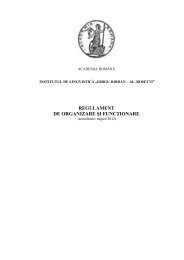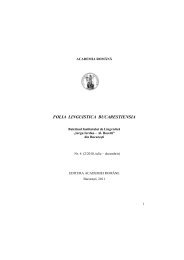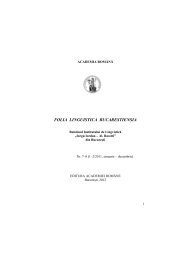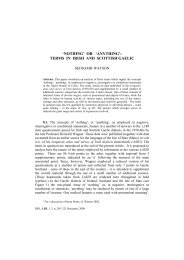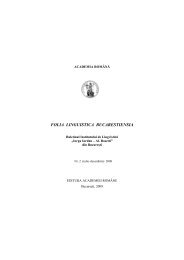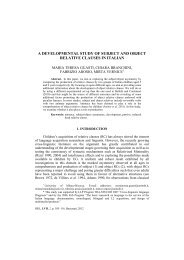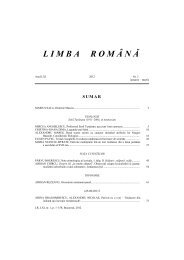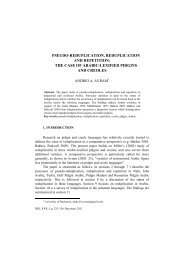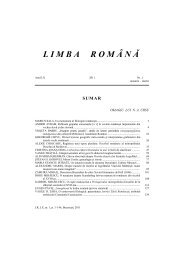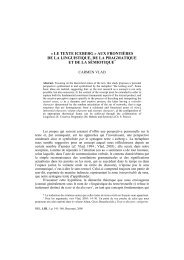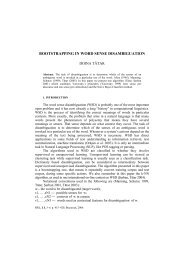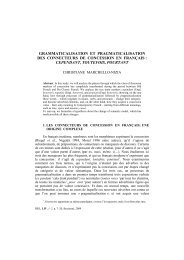You also want an ePaper? Increase the reach of your titles
YUMPU automatically turns print PDFs into web optimized ePapers that Google loves.
296<br />
Ian Hancock<br />
On August 1 st 1509 five Portuguese ships landed at Malacca under the<br />
command of Admiral Diogo Lopes de Sequeira. This was the first instance of<br />
contact between Europeans and the inhabitants of the Malay Peninsula. Initial<br />
friendliness on the part of the local population soon gave way to hostility and<br />
mistrust − a state of affairs which, due to cruel treatment by the Portuguese, was to<br />
remain for the whole period of their occupation of the area. In 1511 the nobleman<br />
Alfonso de Albuquerque landed at Malacca with 19 ships, the crew comprised of<br />
800 Portuguese and 600 Indian soldiers. They stayed three months and erected a<br />
fort − a fort so well constructed that despite its having been attacked 20 times<br />
during a period of over 120 years, not once was it ever taken. At this time, Malacca<br />
had a population of some 20,000, of whom about one third were Portuguese or of<br />
Portuguese stock. The town welcomed vessels of all nations (excepting Arab<br />
ships), and from their base there the Portuguese continued their exploration of the<br />
Far East.<br />
In 1580 Portugal became part of the Spanish Empire under Philip II, but<br />
despite added naval strength from the Spaniards they were not sufficiently<br />
powerful to keep the Dutch, who also had interests in the East and with whom they<br />
were now at war, at bay. The Portuguese were defeated in two sea battles (1606<br />
and 1608) in the Straits of Malacca, although at this time the town itself had not yet<br />
been taken. In 1635 the Dutch started regular patrols in the Straits, in order to<br />
waylay all ships entering and leaving Malacca. In a few years the town had become<br />
so weak that it was quite vulnerable to attack; consequently in July, 1640 2,000<br />
Dutch soldiers landed there and starved the Portuguese out. The latter eventually<br />
surrendered on December 1 st that same year. They were not, however, massacred,<br />
but allowed to leave quickly and settle in other Portuguese colonies in the East<br />
such as Goa and Diu. Only a handful of Portuguese and Portuguese Eurasians were<br />
left in Malacca.<br />
The Dutch held the town until 1795, a period of 155 years. Under them it did<br />
not prosper, and by the end of their rule the population had decreased to 15,000.<br />
The British took over in 1795, but the Dutch returned in 1818 in an attempt to<br />
re-establish their trade In the area. In 1824 however, a treaty was drawn up<br />
between the Dutch and the British whereby Singapore and the Malay Peninsula<br />
was to come under British rule, and the island of Riau (earlier spelt Rhio or Rhiow,<br />
and also known as Pulau Bintang) was to go to the Dutch. The whole of Malaya<br />
remained a British colony until independence − Mĕrdeka − in 1957 when it was<br />
renamed Malaysia.<br />
In English, the Malacca Creoles call their language Portuguese; in their own<br />
language it is known as Papia Kristang (i.e. ‘Christian Speech’) or simply<br />
Kristang, by which name the Creoles also call themselves. In metropolitan<br />
Portuguese Papia Kristang has been called variously Malaqueiro, Malaquense,<br />
Malaques and Malaquenho, while in Malay, at least colloquially, it is sometimes



